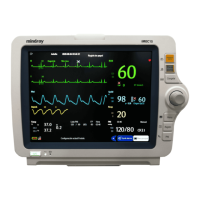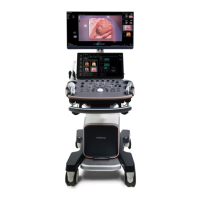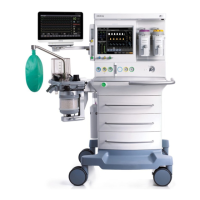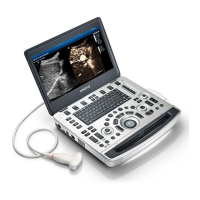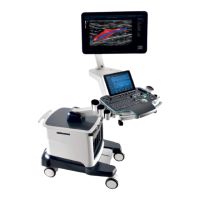Do you have a question about the Mindray iMEC12 and is the answer not in the manual?
| Display Size | 12.1 inches |
|---|---|
| Display Type | TFT LCD |
| Battery Life | 4 hours |
| ECG | Yes |
| SpO2 | Yes |
| NIBP | Yes |
| Respiration | Yes |
| Temperature | Yes |
| Channels | Up to 12 |
| Weight | 4.5 kg |
| Battery Type | Rechargeable lithium-ion |
| Connectivity | Wi-Fi |
| Resolution | 800 x 600 |
Details the revision number and release time of the manual, indicating changes made due to software or technical updates.
Specifies the target readers for this service manual, including biomedical engineers, authorized technicians, and service representatives.
Lists and defines abbreviations used throughout the service manual for clarity and understanding.
Details the passwords required to access different operational modes within the patient monitor.
Provides essential safety definitions for DANGER, WARNING, CAUTION, and NOTE to ensure safe operation and maintenance.
Outlines critical hazards that can result in death or serious injury if not avoided.
Details potential hazards or unsafe practices that could lead to death or serious injury.
Highlights potential hazards or unsafe practices that might cause minor personal injury or product damage.
Introduces the patient monitor's purpose, functions, and system components, including physiological parameter monitoring.
Details the various connections for peripherals and system integration, including installation support.
Describes the architecture of the main unit, comprising front and rear housing assemblies and their internal components.
Details the components within the front housing, including the main board, keypad, display, and touchscreen.
Outlines the components within the rear housing, including power management, multi-parameter, and interface boards.
Guides users on how to unpack the patient monitor and verify the completeness of the package contents.
Details site requirements, including environmental conditions and electrical and network connector availability.
Specifies the electrical requirements, including line voltage and frequency, for the patient monitor's operation.
Provides instructions for upgrading hardware components such as the SD storage card, touchscreen, Wi-Fi, and recorder.
Covers the process of upgrading the patient monitor's system and module software using the Mindray Upgrade Tool.
Introduces the chapter on regular inspection, maintenance, and testing procedures for ensuring patient monitor functionality.
Outlines recommended preventative maintenance procedures to be performed at specified intervals.
Specifies the recommended frequency for various maintenance tasks, checks, and calibration procedures.
Details performance testing procedures for individual modules like ECG, SpO2, NIBP, Temp, IBP, C.O., and CO2.
Introduces the chapter on identifying common causes and recommended corrective actions for patient monitor issues.
Provides a systematic guide to diagnose and resolve common symptoms with their possible causes and corrective actions.
Details troubleshooting steps for issues related to the monitor failing to power on or turn off.
Provides troubleshooting guidance for issues affecting the monitor's display, such as blank screens or distorted images.
Lists the essential tools, such as screwdrivers and tweezers, needed for disassembly and repair procedures.
Outlines crucial preparation steps before disassembling the equipment, including safety precautions.
Details the step-by-step process for disassembling the main unit of the patient monitor.
Introduces the chapter that details hardware architecture and lists all serviceable parts for the main unit.
Provides an exploded view and parts list for the main unit of the iMEC8/iMEC5 patient monitor series.
Shows an exploded view and parts list for the front housing assembly specific to nakescreen models.
Provides an exploded view and parts list for the front housing assembly for touchscreen equipped models.
Specifies inspection criteria for the power cord plug, including pins, body, and strain relief.
Outlines visual and contextual inspection criteria for the device enclosure, accessories, and connectors.
Describes the procedure for testing protective earth resistance to ensure equipment safety.
Details the process for performing earth leakage tests on the device's electrical components.
Explains how patient leakage currents are measured using specific test conditions and limits.
Describes the test for mains voltage impact on applied parts, covering normal and reversed polarity.
Explains the measurement of patient auxiliary currents for different applied part types and conditions.
Outlines the requirements and form for conducting scheduled electrical safety inspections.
Specifies the electrical safety test items that must be performed after equipment repair.

